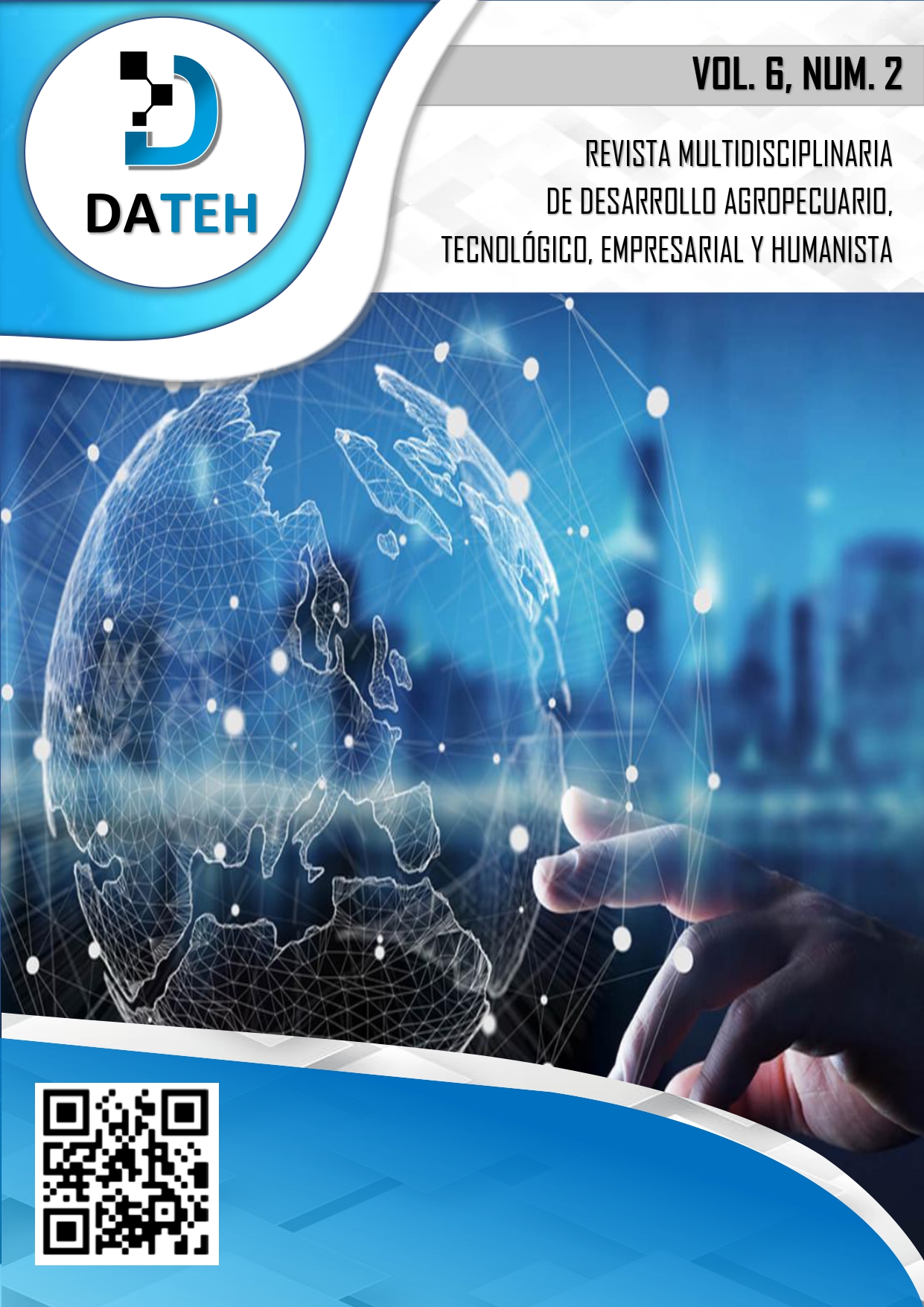Digital marketing strategies using Growth Hacking for the dairy sector in Tungurahua
Abstract
The Growth Hacking strategies have various benefits focused on designing digital marketing strategies using minimal resources. Several low-cost web platforms are applied for their operation, which can be implemented in any business, considering market segmentation. I employed a documentary review using numerical data obtained from various websites such as the National Institute of Statistics and Censuses (INEC) and Agripac. These data were analyzed through multiple linear regressions, and a survey was conducted, considering the criteria of experts in this field. Correlation of these variables was done using the Pearson correlation coefficient, resulting in a value of 0.62, indicating the relationship between Growth Hacking and dairy production in the province of Tungurahua. One of the most significant findings of the research is that 73% express a desire to apply these tools, considering their low cost, to adapt and improve sales. Effective marketing plays a crucial role in creating brand awareness, highlighting the unique attributes of dairy products, and fostering consumer loyalty. Strategies such as Content Marketing and the use of social media platforms enable reaching specific audiences, conveying persuasive messages, and showcasing the quality and values of dairy products.
Downloads
References
Guanoluisa, S., Jiménez, F., & Teneda, W. (2023). Cadena de comercialización del cacao en los países en desarrollo y su sostenibilidad en la provincia de Napo, Ecuador. 593 Digital Publisher CEIT, 8(3–1), 639–649. https://doi.org/10.33386/593dp.2023.3-1.1866
Klius, Y., Ivchenko, Y., Izhboldina, A., & Ivchenko, Y. (2020). International approaches to organizing an internal control system at an enterprise in the digital era. Economic Annals-XXI, 185(9–10), 133–143. https://doi.org/10.21003/EA.V185-13
Langan, R., Cowley, S., & Nguyen, C. (2019). The State of Digital Marketing in Academia: An Examination of Marketing Curriculum’s Response to Digital Disruption. Journal of Marketing Education, 41(1), 32–46. https://doi.org/10.1177/0273475318823849
Leone, M., Matuson, L., & Analyst, R. (2019). Speed Digital Transformation through Infrastructure Modernization Consolidate Traditional and Modern Applications on VMware vSAN.
Londoño Arredondo, S., Mora Gutiérrez, Y. J., & Valencia Cárdenas, M. (2021). Modelos estadísticos sobre la eficacia del marketing digital. Revista Escuela de Administración de Negocios, 84. https://doi.org/10.21158/01208160.N84.2018.1923
Masrianto, A., Hartoyo, H., Hubeis, A. V. S., & Hasanah, N. (2022). Digital Marketing Utilization Index for Evaluating and Improving Company Digital Marketing Capability. Journal of Open Innovation: Technology, Market, and Complexity, 8(3). https://doi.org/10.3390/JOITMC8030153
Medina, M., Rojas, R., Bustamante, W., Loaiza, R., Martel, C., & Castillo, R. (2023). Metodología de la investigación: Técnicas e instrumentos de investigación. Metodología de La Investigación: Técnicas e Instrumentos de Investigación. https://doi.org/10.35622/INUDI.B.080
Membiela-Pollán, M., of, N. F.-A. R., & 2019, undefined. (n.d.). Herramientas de Marketing digital y competencia: una aproximación al estado de la cuestión. Dialnet.Unirioja.Es. Retrieved July 27, 2023, from https://dialnet.unirioja.es/servlet/articulo?codigo=7407247
Montañés del Río, M. Angel., Serrano Domínguez, C., & Medina Garrido, J. Aurelio. (2021). Técnicas de marketing viral. 163.
Moorhouse, B. L., & Wong, K. M. (2022). Blending asynchronous and synchronous digital technologies and instructional approaches to facilitate remote learning. Journal of Computers in Education, 9(1), 51–70. https://doi.org/10.1007/S40692-021-00195-8
Nuñez Cudriz, E. C., & Miranda Corrales, J. (2020). El marketing digital como un elemento de apoyo estratégico a las organizaciones. Cuadernos Latinoamericanos De Administración, 16(30), 9–14. https://doi.org/10.18270/cuaderlam.v16i30.2915
Pacheco, D., & Rodríguez, R. (2020). TIC COMO ESTRATEGIA COMPETITIVA EN LA GESTIÓN EMPRESARIAL. Revista Enfoques, 3(12), 286–298. https://doi.org/10.33996/REVISTAENFOQUES.V3I12.72
Peña Pascual, I. (2022). Digital storytelling as a Study Abroad Project in Spanish: learnings, difficulties and changes. Porta Linguarum, 2022(Monograph4), 173–192. https://doi.org/10.30827/PORTALIN.VI.21397
Rizvanović, B., Zutshi, A., Grilo, A., & Nodehi, T. (2023). Linking the potentials of extended digital marketing impact and start-up growth: Developing a macro-dynamic framework of start-up growth drivers supported by digital marketing. Technological Forecasting and Social Change, 186. https://doi.org/10.1016/J.TECHFORE.2022.122128
Salas, M., Jijón, C., & Moreno, K. (2020). ESTRATEGIAS DE GESTIÓN EMPRESARIAL: UN ACERCAMIENTO A LA PLANEACIÓN SISTEMÁTICA. Universidad Ciencia y Tecnología, 24(107), 12–21. https://doi.org/10.47460/UCT.V24I107.409
Uribe Beltrán, S. N. (2021). Marketing digital en micro y pequeñas empresas de publicidad de Bogotá. Universidad, 23(40). https://www.redalyc.org/journal/1872/187265084005/187265084005.pdf
Villanueva, L. B., … L. Á. G.-R. U. y, & 2021, undefined. (n.d.). Generación de valor agregado a través del marketing digital en las Mipymes. Scielo.Sld.Cu. Retrieved July 27, 2023, from http://scielo.sld.cu/scielo.php?pid=S2218-36202021000500407&script=sci_arttext
Wang, W. L., Malthouse, E. C., Calder, B., & Uzunoglu, E. (2019). B2B content marketing for professional services: In-person versus digital contacts. Industrial Marketing Management, 81, 160–168. https://doi.org/10.1016/J.INDMARMAN.2017.11.006



